Why we support more greenways
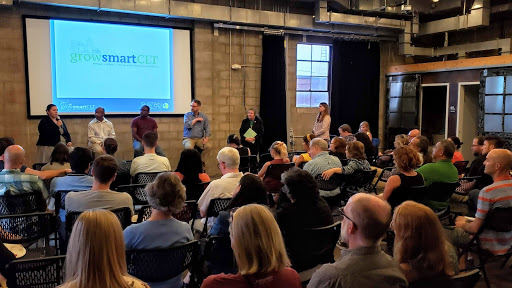
Last week, we gave a presentation to some members of the Mecklenburg County Board of County Commissioners about the importance of greenways. Earlier this month, at our Grow Smart CLT event, we heard from residents who are mobilizing their neighbors to advocate for more parks and greenways.
We wanted to share why greenways are so important and provide some recommendations for expanding the greenway network.
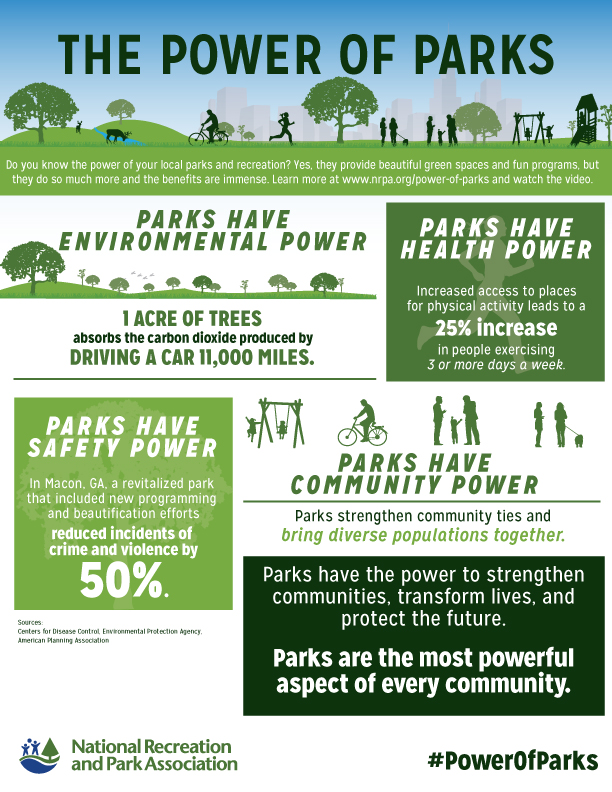
Why greenways?
Parks and Greenways provide a number of environmental, economic, and social benefits.
From an environmental standpoint, greenways improve water quality by buffering streams and trapping pollutants. They preserve wildlife habitat biodiversity, reduce flood damage, reduce traffic congestion and promote clean air.
Greenways provide a number of economic benefits. They increase property values and residential safety, appeal to prospective residents and commercial tenants, and expand business opportunities. Every dollar invested in greenways has a significant impact as shown in the graphic below.
The neighborhood and social benefits of greenways include connecting and linking people to adjacent neighborhoods, landmarks and activities. Greenways provide pedestrian & bike-oriented accessibility. A survey by the National Association of Realtors cited walking and biking trails as the #1 amenity desired by homebuyers. The CDC determined that by creating and improving places in our communities to be physically active, there could be a 25 percent increase in the amount of people who exercise at least 3 times a week. Mecklenburg County residents have consistently ranked paved walking and biking trails as a top priority for Park and Recreation.
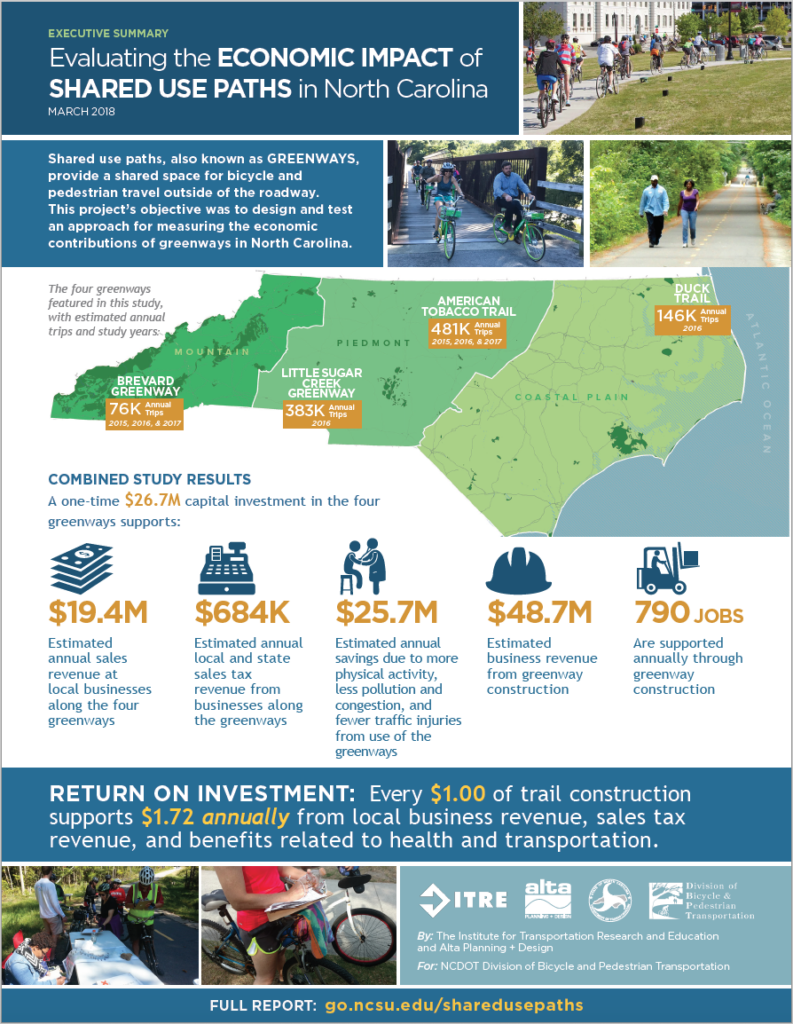
Greenways as transportation
As our community builds out the greenway network, it’s important for us to realize the transportation potential of the system. Expanding the network allows more people to reach jobs, educational opportunities, as well as locations like grocery stores and houses of worship.
30% of Charlotteans don’t drive. Transportation costs are the second largest household expense (23%) behind housing (30%). That means the average home in Mecklenburg County spends 53% of household income on housing and transportation. It’s important to expand the affordable housing conversation to include affordable living. Afterall, living in affordable housing with little to no access to public transit, sidewalks, bike lanes, and greenways could result in a situation where you pay less for housing but more for transportation.
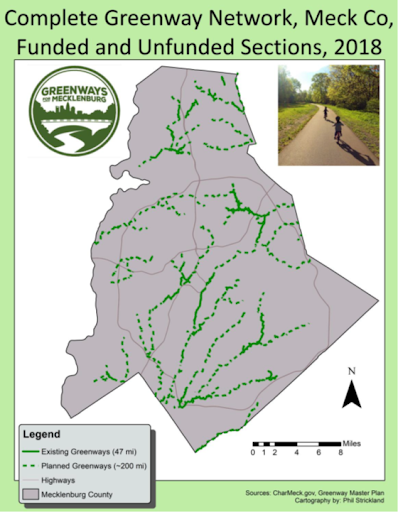
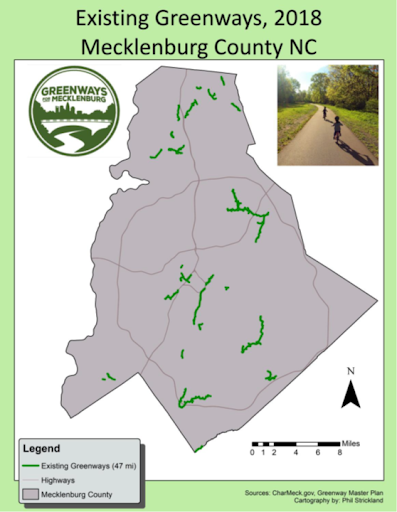
Greenway network status
The 1980 Charlotte Mecklenburg greenway plan called for 79 miles of greenways. The 2008 master plan called for 129 miles by 2018. Mecklenburg County currently has around 47 miles of existing greenway.
Construction, under the current budget levels and budget structure, proceeds at a slow pace of only 3-4 miles per year. For instance, under the current budget structure, there are projects from the 2008 greenway bond package, that were previously scheduled to be completed by 2018, but that will not even begin planning until 2023.
Under the current pace of construction, a connected greenway network would not be completed for more than forty to fifty years. It’s important that we act now in an intentional way to build out the network, especially as the cost of acquiring property continues to increase.
Recommendations
We join groups like Greenways for Mecklenburg in advocating for the following:
- Complete 150 miles of a connected greenway network to be constructed by 2030 and an entire 200-mile system by 2035.
- Structure financing for greenway projects as a solitary project, with annual greenway funding available to any stage of any portion of the network throughout the county with an immediate goal of completing 9-10 miles of greenways per year.
- Ensure adequate staff exists in Parks and Recreation, Land Acquisition, and county Asset & Facilities management to accomplish this goal.
- Ensure that 20-25 miles of greenway always be in design or construction
- Partner with all municipalities in the county to coordinate this network with future municipal trails and pedestrian and bike transportation routes
- Ensure the citizens of Mecklenburg County have an adequate opportunity to provide input on future greenway plans.
- Ensure other necessary Parks and Recreation services and land acquisition be funded. A vibrant parks system – in addition to the greenway network – is essential to the future of Mecklenburg County.
Thanks for reading!
As a nonprofit, community support is essential for us to keep doing what we do — including providing free articles like this. If you found this article helpful, please consider supporting Sustain Charlotte.
Want to stay in the loop? Subscribe to our weekly newsletter and follow us on Instagram, Facebook, and Twitter.
